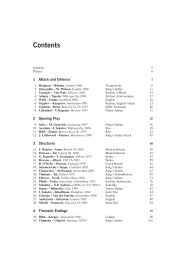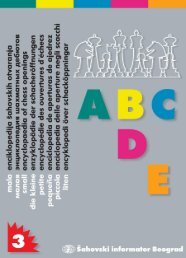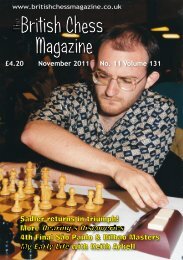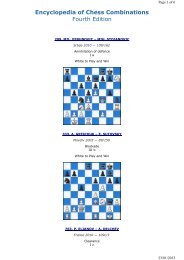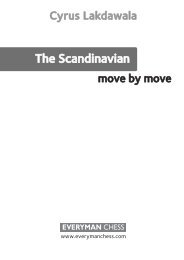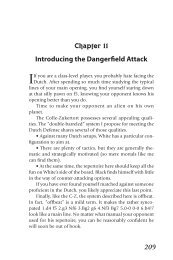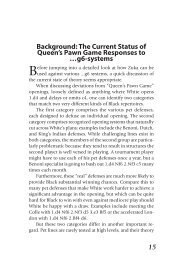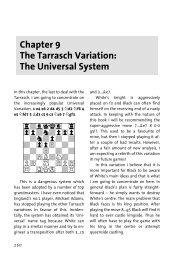View/download user manual - Chess Direct Ltd
View/download user manual - Chess Direct Ltd
View/download user manual - Chess Direct Ltd
Create successful ePaper yourself
Turn your PDF publications into a flip-book with our unique Google optimized e-Paper software.
Rules of <strong>Chess</strong><br />
I. General Moves<br />
1. The two players must alternate in making one move at a time. The player with the white pieces moves first to<br />
start the game.<br />
2. With the exception of castling (section II.1.), a move is the transfer of a piece from one square to another<br />
square which is either vacant or occupied by an enemy piece.<br />
3. No piece, except the Rook when castling and the Knight (section II.5) may cross a square occupied by another<br />
piece.<br />
4. A piece that moved to a square occupied by an enemy piece captures it as part of the same move. The player<br />
making the capture must immediately remove the captured piece from the chessboard.<br />
5. When one player moves a piece into a position whereby he can attack the King, the King is in "Check"<br />
(announced by the CHECK LED) and must either<br />
a) move the King,<br />
b) block the path of the attacking piece with another piece,<br />
c) or attack the attacking piece.<br />
6. The game is over when there is no escape for the King from an attacking piece. This is known as<br />
"Checkmate" (the CHECK and MATE LED).<br />
II.<br />
1. KING<br />
Individual Moves<br />
Except when castling, the King can move only one space to any adjoining square (including diagonally) which<br />
cannot be attacked by an enemy piece.<br />
Castling is a move of both the King and either Rook which counts as a single move (of the King) and is executed as<br />
follows:<br />
a) The King is moved from its original square two squares toward either Rook on the same rank, and<br />
b) The Rook is moved to the opposite side of the King.<br />
Castling cannot occur if:<br />
a) the King has already been moved.<br />
b) the Rook has already been moved.<br />
c) the King's original square or the square which the King must cross or the one which it is to occupy is attacked<br />
by an enemy piece.<br />
d) there is any piece between the King and the Rook.<br />
2. QUEEN<br />
The Queen can move to any square along the same rank, file or diagonal on which it stands (except as limited by<br />
Article I.3).<br />
19



